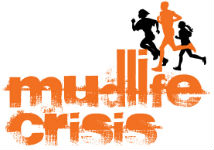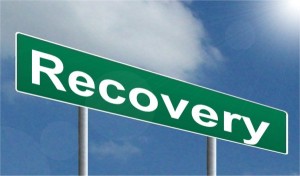I mentioned on Sunday in my weekly Periscope broadcast that I was going to give you an update on the Parkour Strength workouts that I’ve been doing, and that is to come, for sure. But whilst I was doing said workout this morning, another even more important topic jumped into my head – and that’s the mindset for how we Mudlife-Crisis-aged folks should approach our training and even more importantly, our recovery.
Because, let’s face it: it can take us a little longer to recover from the tough workouts. Even if we do everything right: diet, proper movement, pacing, foam roller or lacrosse ball sessions, etc.; it is going to take us a bit longer to get our bodies to build the muscle repaired and glycogen stores back up, to let our joints settle down, and more.
But here’s the rub: we’ve got goals, darn it. We’ve got a plan that we’re following, and there’s nothing more frustrating than to have that muscle soreness continue more than one day after a tough workout. It cuts into our ability to perform the next workout, and the next, and then that soreness begins to compound on itself, and… and…
Yeah, it’s frustrating.
But what’s to be done? The workout routine that we’ve decided to follow says that we need to do strength workouts Monday-Wednesday-Friday, cardio on Tuesday-Thursday-Saturday, and then full rest on Sunday. What do we do if we can’t follow that plan?
Make your own recovery plan!
So first of all, let’s take a deep breath and say: “we need a little more time to recover.” It comes with age, folks.
But that doesn’t mean we’re going to be sitting on our asses. Far from it. One of the things I’ve tried to impart in this blog is that constant low-level movement is frequently better for our overall health, recovery, and longevity than is just vegging out in front of the TV and sleeping all day. I said it last night in my #essentialife Periscope and I’m saying it again now.
Is your attitude about workout recovery holding your progress back? Fix that problem here! #mudlifecrisis Click To TweetSo first of all, step one is to get in the habit of doing low-level work all day long. Once every hour or two, stop and do 10 air squats and 5 push-ups, or a set of jumping jacks, or hang from a pull-up bar or tree for a minute. Seriously, that’s it. Keep the blood moving and keep your muscles from getting sore. And, if your workout had a buttload of push-ups, maybe do some elevated push-ups – from a wall or counter or something. Keep those same muscles moving, but not to the point where you’re stressing them like another workout. You want blood flowing through those muscles to speed along your recovery.
And make sure that movement is all-over, and hitting your joints and muscles from lots of different angles. You want to be keeping those lines of movement open all over your body to overcome the issues of too much sitting or other stagnant positions (even having a standing desk, like I do, you end up in one position for too long).
Second of all, walk. Walk a lot. At least 10,000 steps a day. Figure out ways to work walking into your every day routine. For instance, if the grocery store isn’t too far away, you could walk down there and get stuff for the next night’s dinner on a regular basis. That’d be even better because you’d be carrying extra weight one way – making your body move in yet another line of movement!
Or if you’re into such things, go golfing for a few holes. Carry that bag yourself, don’t get a cart. Use that golfing movement and all the walking to kill two birds with one golf ball.
And I’m not talking speed walking. Let your arms swing, don’t hold them in front of you. Keep your heart rate low – between 55 and 75% of max, and closer to the bottom of that range. Get a heart rate monitor if you need to monitor this.
Third, and this may be the most important step: write this stuff down. Make it a part of your plan. Yeah, you may not be able to do the workouts that the plan you just bought every day, but if you create a plan based on that plan you bought, but also write down what you’re going to do on those recovery days and how you’re going to move, then bingo: you have a new plan, and most importantly you’ll have the goal and the satisfaction of knowing that you’re on the schedule that you want to be on.
Put it on a calendar. Get an app like Todoist or something similar.
Use whatever means you have to make yourself see that extra recovery time as part of the plan, not interfering with the plan.
So that’s it. Try this out for a while, and then get back and tell me how it’s working for you!
Comments below, as usual. And please share this with friends and family, or anyone who you think might enjoy or get something out of it!







